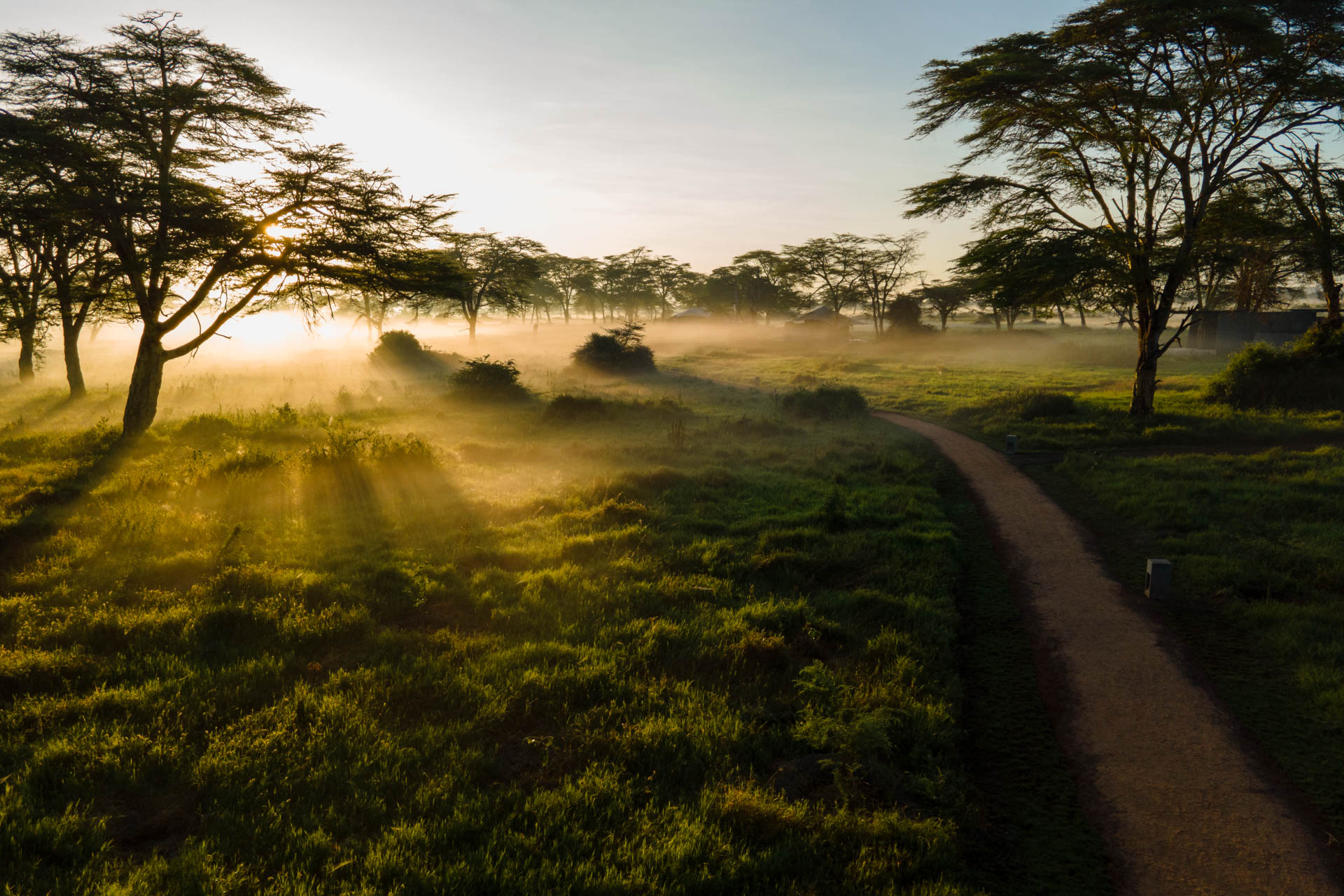
The mornings in Amboseli never fail to inspire. As the sun battles its way through the dramatic mist, it paints the landscape like a fairytale-like scene. The sky turns into a canvas of orange-red to golden hues as dawn breaks, casting its gentle light upon the majestic Kilimanjaro. This daily spectacle has graced us for the better part of the week.
With the arrival of the long rains, the landscape undergoes a dramatic transformation. Puddles become mirrors, reflecting the beauty that surrounds them, while also providing essential nourishment to the flora. These serene waters add depth and character to the already breathtaking scenery.
We've been incredibly fortunate this week to witness the majestic presence of numerous elephants within the Kimana Sanctuary, but one individual stands out in particular for his sheer size and awe-inspiring presence... Meet Pascal, a distinguished member of Amboseli's league of big tuskers, whose stature is nothing short of humbling. At 44 years old and hailing from the esteemed 'PC' family, Pascal is among the rare mature bull elephants who carry the special genes of Super Tuskers in the region. Identifying Pascal is a pleasure — his distinctive right ear, adorned with a unique fold, sets him apart effortlessly.
I recently had the privilege of encountering him not far from the lodge, where he was peacefully grazing. The Sanctuary's abundant pasture and access to the perennial Kimana stream ensure that Pascal and his fellow giants thrive, providing them with ample sustenance and hydration in their natural habitat.
During a drive in Amboseli National Park, our guest and budding photographer, Alexis, came across stunning scenes of elephant families. She was thrilled to encounter one of her (and everyone's) favourite elephants, who also happens to be one of the most famous and most photographed of all time. Craig, a Super Tusker, is renowned worldwide, and photographers adore him for his remarkably calm nature as much as his size. We shared her excitement as we assisted her in selecting the best images for editing in our photographic studio — these were some of her best shots.
As the week drew to a close, an intriguing sighting captured my attention during a morning drive. The yellow-necked spurfowl, native to parts of Africa, particularly in savannas and grasslands, exhibited their distinctive calls, especially notable during the breeding season. These calls serve various purposes, from communication and social interaction to mating displays and even territorial defense.
In this instance, I observed the birds making calls, presumably for a combination of reasons. Typically, males perch on mounds, logs, trees or other raised surfaces to assert dominance and defend their territory. I noticed one bird calling out, while another, from further away, responded. It wasn't clear whether they were warning each other to stay out of their respective territories or inviting one another for breakfast, but their communication was evident. Witnessing such moments as nature unfolds with all its captivating mysteries is always a pleasure. —Sammy Njoroge
In the wild, we consider elephants gentle giants but we never forget their immense power. At times, it can get ugly especially when rival bulls fight. Like many other male animals, they fight for various reasons but mostly for dominance — to establish a social hierarchy, larger and stronger individuals assert their authority over others. I was lucky to witness these giants fight and I was in awe of the sheer power these elephants have. I could hear them trumpeting and watched as they used their tusks to push against each other. Just like in any other fight, there must be a winner and one who walks away with nothing but lessons (and maybe a bruise, or two). In this case, one emerged a winner, trumpeting to announce his victory and to reinforce his victory over the defeated opponent.
The only surviving boy of the well-known female cheetah, Risasi, made a return to the Triangle a few weeks ago. However, this time we saw him nowhere near the Kenyan/Tanzanian border where his mom is typically seen — we have been spotting him much farther north, close to the Kichwa Tembo airstrip which is a few minutes from the lodge. We believe he will make this area his home as the border has been home to three of Siligi’s sons and the ever-present Border Pride of lions recently; here he faces no territorial fights. Having lost all his siblings to the unforgiving wilderness, his journey to survive as a lone cheetah is a constant struggle, especially with the many predators to steer away from. But his story is a testament to the indomitable spirit of animals in the wild.
We recently sighted the Serena Pride lionesses who are known for their elusive nature, often remaining concealed within the dense bushland, thanks to the controlled burning by the Conservancy that now increases the visibility of animals and provides new vegetation for the animals. As you know, lionesses are the primary hunters, highly skilled and cooperative predators; we found four lionesses who had taken down a warthog. They had already eaten all of it when we arrived, one was finishing up the head as the others were still scanning for potential prey.
Continuing with our drive, we headed toward the border where we had news that the Border Pride had killed a Buffalo the day before. They had had enough, as their bellies told, and were taking cover from the scorching sun under a tree. The Pride now consists of four males from Serengeti and two lionesses; we watched as one male was close to the females and seemed to be shielding the other males from approaching the females, perhaps trying to be the first to mate with either of the females. Lions' complex society is built on cooperation, loyalty and fierce protection — sometimes from each other. –Joseph Njenga
Filed under: This Week at Angama
Subscribe for Weekly Stories
Comments (0):

Angama Image Gallery